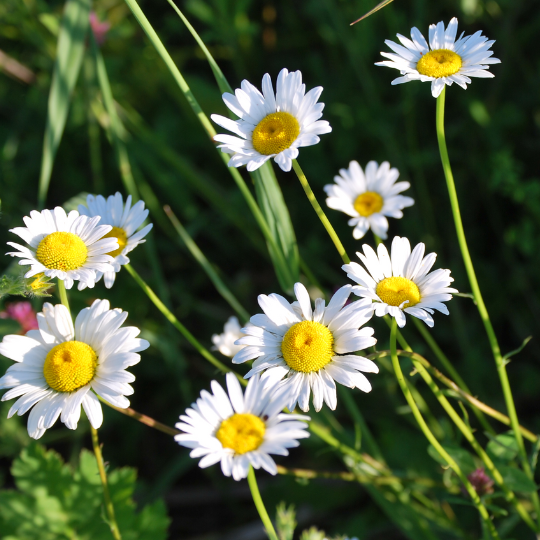Field Daisy (Leucanthemum vulgare)
Along with the dandelion, the daisy is the first flower one identifies as a child. It is perfect in bouquets of wildflowers and can help us find the love of our life he loves me, he doesn't love me, he loves me, he doesn't love me...;De moreover, young fresh daisy leaves are eaten in salads. They have a slightly peppery taste. The flower bud is eaten raw or like capers. In herbal medicine, the dried flowers are used as an infusion. Daisy has antispasmodic, calming, digestive, astringent properties just like chamomile which is from the same family
MAINTENANCE AND OTHER CONSIDERATIONS
White daisy is found in open, sunny places. This is why it scatters the fields, the vacant lots and the edges of the roads. It likes dry places and poor soils.
| Plant type: Perennial |
| Flower color: White |
| Quantity: Envelope of about 150 seeds |
| Exposure: Half shade |
| Shape: Erected |
| Soil: Well drained |
| Watering: Low water requirement |
| Sowing: Directly in the garden |
| Plantation: In the garden after the risk of frost |
| Days to maturity: 2 years |
| Germination: 7 to 15 days |
| Plant spacing: 20 cm |
| Depth: On the surface |
| Width: 40 cm |
| Height: 30 cm to 60 cm |
| Flowering : June and july |
| Family: Asteraceae |
| Characteristic: Edible |


![[003] Agastache fennel (Agastache foeniculum)](/web/image/product.product/898/image_128/%5B003%5D%20Agastache%20fennel%20%28Agastache%20foeniculum%29?unique=1b11bbb)
![[035] Calendula (Calendula officinalis)](/web/image/product.product/515/image_128/%5B035%5D%20Calendula%20%28Calendula%20officinalis%29?unique=b74784a)
![[038] Chamomile (Matricaria recutita)](/web/image/product.product/632/image_128/%5B038%5D%20Chamomile%20%28Matricaria%20recutita%29?unique=a330272)
![[222] Sunflower (Helianthus annuus)](/web/image/product.product/545/image_128/%5B222%5D%20Sunflower%20%28Helianthus%20annuus%29?unique=4871c23)
![[225] Zinnia (Zinnia sp.)](/web/image/product.product/523/image_128/%5B225%5D%20Zinnia%20%28Zinnia%20sp.%29?unique=4e837a3)